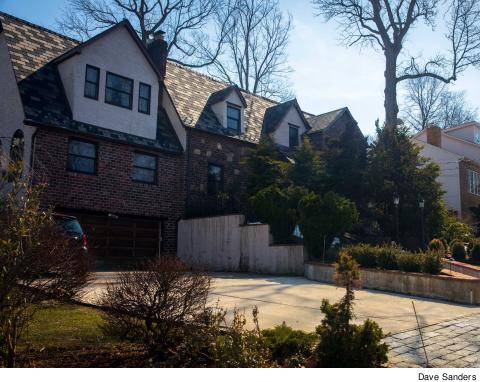Houses for presidents raise cash in a crunch
 |
As part of a strategy to generate revenue under severe budget shortfalls triggered by the pandemic, CUNY has decided to sell residences usually provided to serving college presidents at Medgar Evers College and the College of Staten Island (CSI). According to management’s plan, CUNY also intends to eventually sell its remaining presidential houses at Baruch College, Lehman College, Queens College and Brooklyn College.
“For us to be able to really move into what we’ve got to do – which is educate our students – we want to get out of this business of the presidential housing,” said Hector Batista, CUNY’s executive vice chancellor and chief operating officer, during a December 2020 meeting at which the CUNY Construction Fund (CUCF) approved the dispositions. Batista has also served as CUCF’s acting interim executive director since December.
DOLLAR BILLS
The two properties could raise around $4.4 million. The CSI presidential house, located at 35 Beebe Street in Staten Island, was purchased in 1999 for $960,000 and appraised last fall, according to Batista, at $1.3 million. The Medgar Evers College residence, an apartment in the iconic Williamsburgh Savings Bank Tower in Downtown Brooklyn, was recently appraised at $3.09 million. CUNY purchased it for $1.5 million in 2010.
CUNY’s Board of Trustees unanimously approved the sales on December 14 of last year.
“Probably, there are two more [residences] that we would be bringing forward in the future,” Batista said during the CUCF meeting. He added that in some cases, the maintenance costs of presidential houses are in the “hundreds of thousands of dollars.”
In lieu of a residence, CUNY offers a housing allowance of $5,000 per month to presidents or deans of colleges. The chancellor receives a monthly housing allowance of $7,500 on top of his $650,000 annual pay. Additional compensation for the chancellor includes a vehicle, business expenses, memberships in professional associations, pension and health insurance.
These types of perks are in addition to the annual salaries CUNY approved in 2017 for presidents and deans.
The idea to sell its presidential houses dates back to 2001, when then-Chancellor Matthew Goldstein reportedly submitted a plan to sell eight residences worth more than $10 million. Some were eventually sold off. The four-story brownstone on the Upper East Side, once intended as the chancellor’s residence, brought in $3.4 million in 2009.
Yet in 2010, CUNY purchased the apartment in the Williamsburgh Savings Bank Tower that it is now bringing to market.
CUNY advocates say the initiative to sell off the opulent homes, which are themselves symbols of housing the inequalities between upper-management and the rest of CUNY, is a welcome one, but PSC activists are quick to note that the plan is not a replacement for a real effort to increase annual state funding for CUNY.
In February, Clarion reported that housing insecurity – the inability to pay rent or utilities, or the need to move frequently – was experienced by 55% of CUNY students, according to a 2018 survey published in March 2019. The survey also found 14% of CUNY students reported having experienced homelessness, and 3% self-identified as homeless.
CLOSE THE DEAL
It is not certain when CUNY will be able to close a deal on any of the properties it has decided to sell or how much cash it will ultimately obtain. The CSI house (built in 1945) needs a lot of “mechanical stuff that has to get fixed,” said Batista.
Questioned by New York Senator Toby Ann Stavisky, chair of the Higher Education Committee, Batista acknowledged that because of the pandemic, the real estate market was currently “soft.”
“We will do our best to make sure that we recoup as much of the money as possible,” said Batista. “If we don’t get what we believe we should be getting,” he suggested, the sales may be postponed. As of March 10, none of the properties were listed on commercial real estate market websites.
Overall, CUNY is reviewing its assets to identify potential revenue sources or savings that could support its core educational mission, said Frank Sobrino, a university spokesperson.
Last year, the Board of Trustees Committee on Facilities Planning and Management reportedly approved a $750,000 contract with Real Estate Solutions Group (RESG) to assess the value of CUNY’s more than 300 buildings, comprising 29 million square feet, across all five boroughs.
CUNY’s academic and administrative offices comprise 30% of the university’s square footage, followed by instructional (28%) and support services (18%). The residential properties, which make up a relatively negligible part of CUNY’s real estate assets, are included in the unassigned and non-institutional agencies’ assets or “other” category, which makes up 8% of CUNY’s square footage.
AGED HOMES
The average building at CUNY is more than 50 years old, most are over 30 and some exceed 100. To maintain these assets, CUNY requested $3.627 billion in its five-year capital plan for the fiscal year 2021-22 through 2025-26 for capital renewal and minor repair.
In this context, CUNY is looking for sources of additional revenue and savings. “To the extent any of these facilities holds untapped potential to generate revenue to support CUNY’s core mission, the university would like to determine the opportunities available to it,” Sobrino explained to Clarion. “This is consistent with best fiscal practices across higher education nationally.”
To many like Stavisky, the dispossession of buildings is preferable to other options for offsetting budget cuts. “I would rather see a property sale,” Stavisky said at the CUCF meeting, “than raising tuition on students or firing professors.”

